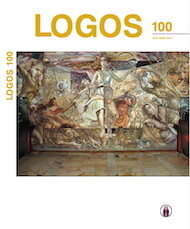The Allegory of the Old English Poetic ‘Judith’: ‘For þam se cyncg wilnað þines wlites’ (“For the King shall greatly desire thy beauty”)
The Allegory of the Old English Poetic ‘Judith’: ‘For þam se cyncg wilnað þines wlites’ (“For the King shall greatly desire thy beauty”)
Author(s): Tatyana Solomonik-PankrašovaSubject(s): Poetry, Middle Ages, Philosophy of Language, Theory of Literature, British Literature
Published by: Visuomeninė organizacija »LOGOS«
Keywords: Medieval allegory; typological interpretation; flesh; Incarnation; Immaterial Light;
Summary/Abstract: The Middle Ages believed in the existence of an invisible world of which the visible is a shadow. The statement Aliud dicitur, aliud demonstratur is applicable to the medieval propensity for symbol and allegory that opens vistas for the typological interpretation of the Old Testament characters, places and events. The Septuagint refers to the beauty of Judith as sensuous; in the Vulgata Judith is a widow whose beauty “stems from virtue”. In the Old English poem Judith is described as ides alfscinu (“a damsel of elfin beauty”) when she first appears before Holofernes. The present paper aims at revealing the allegory of Judith beheading Holofernes through the mystery of the Incarnation. Typological interpretation of Judith is embedded in the poetic formula ides alfscinu, which suggests the connotations of Ineffable Beauty and Light. In the poem Judith is adorned with the raiment of virtue – Faith and Virginal purity, a reflection of the Light of the First Creation.
Journal: LOGOS - A Journal of Religion, Philosophy, Comparative Cultural Studies and Art
- Issue Year: 2019
- Issue No: 100
- Page Range: 95-103
- Page Count: 9
- Language: English

